Knowing the flow is imperative to size your regulator. It includes knowing your system's inlet pressure (including any variations), flow rate, and outlet pressure. The values of upstream and downstream pressure of your system will quantify the valve flow performance and determine the size needed for your gas regulator design. However, those parameters are not enough to suggest how to select the right gas regulator design under critical application environments like inline and bottle services.
This hub page will consider all those factors that affect a regulator's performance and suggest best industry practices followed to size and evaluate a regulator.
Factors Influencing Gas Regulator Design for Critical Industrial Processes
Functionality of Regulator
Depending on where in the process line you want to regulate pressure, there are two regulators.
- Pressure-reducing regulator: It controls pressure downstream by regulating or reducing undesirable higher upstream pressure. These regulators are typically used at the start of a system, such as in a compressed air supplier in industrial applications or recirculation valves on natural gas compressors.
- Back pressure regulator: It's a "normally-closed" control valve designed to hold the pressure on production vessels and release the fluid downstream at a set point. These regulators are used at the end of the system, such as gas sales lines, production vessels, vent, or flare lines.
However, it may be worthwhile to determine if your system should have both. A system often has a pressure-reducing regulator at the beginning and a back-pressure regulator at the end to balance the overall pressure.
Sensing Mechanism
Depending on the type of application, regulators can come with two different types of sensing mechanisms—diaphragm or piston.
- Diaphragm sensor-based regulators are best suited for applications requiring greater sensitivity. To offer reliable sensitivity, diaphragms come in different choices of materials like elastomer or PTFE.
- Piston sensing regulators are meant to function for high working pressure applications where sensitivity is less of a concern.
The sensitivity of the regulator for a typical application can be enhanced by increasing the size of the diaphragm or piston with a custom design.
Resolution
In simple terms, resolution refers to the number of turns to dial through the outlet pressure range. The resolution comes into play when you have to make minute fine adjustments in between before achieving the final output pressure.
A simple example would better explain its importance. Let's take two regulators, A and B, of the same output pressure capacity—let’s say, 500 psig, for example. Regulator A can achieve 500 psig in 5 steps and B in 10 steps. If you want to achieve 50 psig output pressure, you need more fine-tune adjustment in A, whereas a single rotation will do the job in B.
Therefore resolution matters in a controlled flow environment.
Gas Type
It is imperative to determine what gas is going through the regulator. If the gas is hazardous or explosive, a non-relieving regulator is preferred. Otherwise, a self-relieving regulator can vent out excess gas downstream in accordance with safety regulations.
Regulator Material
Materials used in the regulator should be compatible with the gas flowing through to avoid any reaction that can cause contamination of the gas stream or deterioration of the regulator component. For instance, a 316 SS body will display excellent mechanical toughness and offer good resistance to chemical corrosion. The seats made up of PCTFE or PEEK polymers are guaranteed to display high resistance to stress cracking and chemical resistance.
In this regard, Swagelok gives options to customize some parts of the regulator with different materials. The table below shows the available material options against specific parts of a regulator.
| Regulator Part |
Customizable Options from Swagelok |
| Body |
- 316 SS
- 316 SS, ASTM G93 Level E-cleaned
- 316 SS, SC-11–cleaned
- Brass CW721R
- Brass, ASTM G93 Level E-cleaned
- Brass, SC-11–cleaned
|
| Seat |
- PCTFE
- PEEK
- 316 SS
|
| Spring button |
- 316 SS
- Zinc-plated steel
|
| Seal |
- Fluorocarbon FKM
- Kalrez
|
Active Mechanism
Depending on how you want to actuate the regulator, there could be different types of gas regulator design options.
1. Spring Loaded Regulators
Here, the loading mechanism is a spring. It generates the loading force (Fs) against the internal force of the regulator (F). When Fs>F, the sensing mechanism increases the outlet pressure of the regulator.
Spring-loaded regulators are available as per different instrumentation and process types.
2. Dome Loaded
These regulators operate by gas pressure inside the dome chamber. Once the loading force exceeds the internal force in the regulator, the outlet pressure increases.
Active mechanism: Loading force(Fd) > Internal force (F)
Like spring-loaded regulators, there could be variations to dome-loaded regulators. For instance, you can add external feedback from the downstream to the dome (or to the pilot regulator just behind the main regulator) to operate the regulator in the more stable range of the curve.
3. Combination (Spring and Dome)
This regulator is designed to operate as a function of differential pressure between dome and spring.
Swagelok offers such combination regulators for every application.
- Back-pressure dome loaded regulators
- Back-pressure spring-loaded regulators
- Pressure-reducing dome-loaded regulators
- Pressure-reducing spring-loaded regulators
Flow Curve
It is common to use flow coefficient (Cv) as the metric to size a regulator. However, it's a relative measure of how much water would pass for a one psi pressure drop through the regulator under a fully open condition. Thus, sole dependence on Cv may lead to oversizing or undersizing of the regulator.
If you oversize your regulator, the control pressure downstream will fluctuate, and you will notice pressure spikes downstream. On the flip side, with an undersized regulator, you will not be able to have enough pressure downstream, and the regulator will operate close to the choke range.
The best way to size a regulator is to look for the flow curve provided by their manufacturers. When reading the flow curve, look for the available range of flows in the X-axis and mark the corresponding changes in outlet pressure in the Y-axis. An ideal flow curve would be a flat line. At this range, the regulator will operate at its highest level of efficiency. A steep drop on the far left or right may indicate the possibilities of dramatic change of pressure even with the slightest change of flow. For Swagelok regulators, you can instantly generate flow curves using our Regulator Flow Curve Generator tool with a few inputs.
Supply Pressure Effect
The output pressure is a function of upstream pressure. Any decrease in the input pressure may cause a rise in output pressure and vice versa. This dependency is known as the supply pressure effect (SPE).
It is easy to understand through the case of a depleting gas cylinder. When the cylinder is about to run out of gas, the supply pressure to the regulator decreases but the output pressure from the regulator increases. Now, if the regulator has an SPE of 1%, a decrease in upstream pressure from 1800 to 800 psig would increase the output pressure from 60 psig to 70 psig. This overpressurization can harm downstream equipment.
There are two ways to manage the supply pressure effect.
- Design a custom regulator with a balanced poppet to reduce SPE.
- Use two regulators in series to offer constant outlet pressure despite input fluctuations.
It further calls for an industry expert to custom design the regulator under the above-mentioned case scenarios.
Swagelok Helps You Configure the Right Gas Regulator Design
Our experienced Field Engineers can offer Swagelok pressure regulator selection support, help to choose the right fittings, and more. They can also assist you in designing your custom order by verifying the nature of gas, average fluid temperature, and media compatibility. Utilize our expert consultation to reduce delays and avoid significant costs while selecting an ideal gas regulator design for your application.
To find out more about how Swagelok Northern California can help you select the right gas regulator design for your industrial needs, contact our team today by calling 510-933-6200.


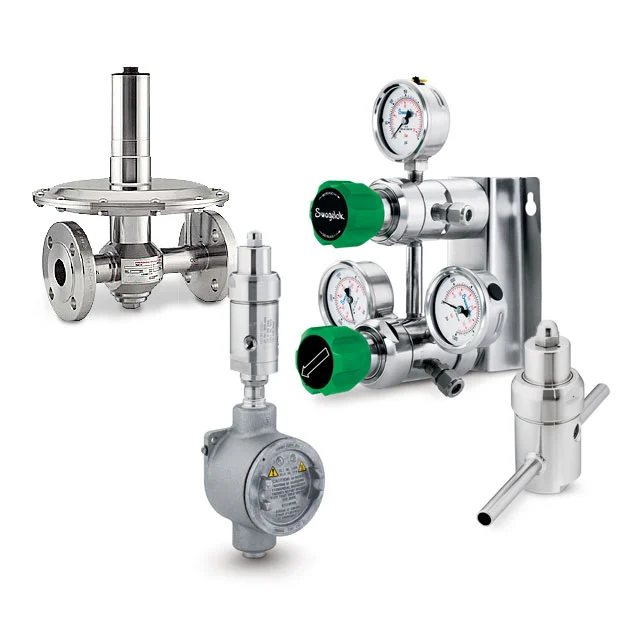
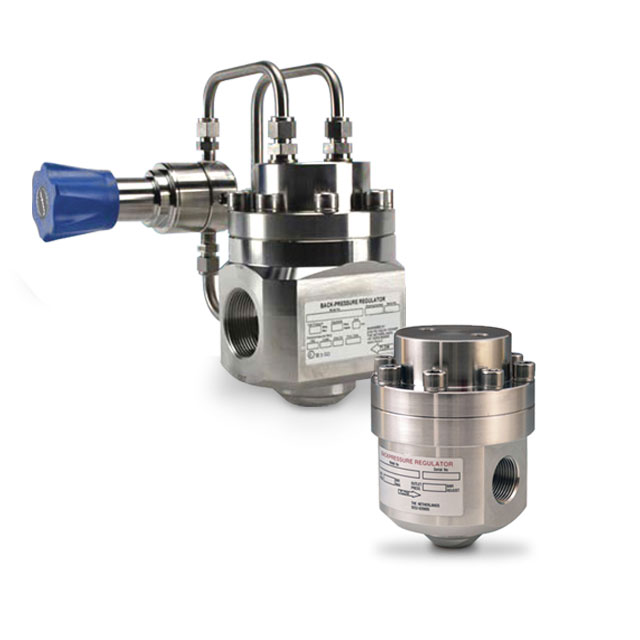
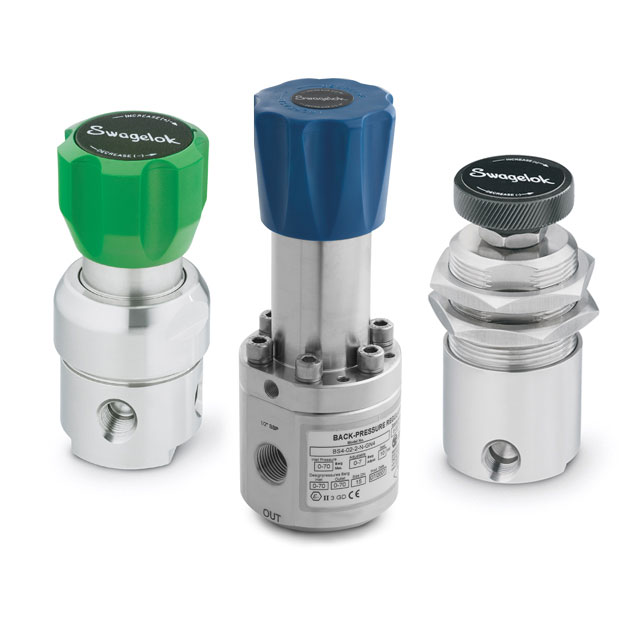
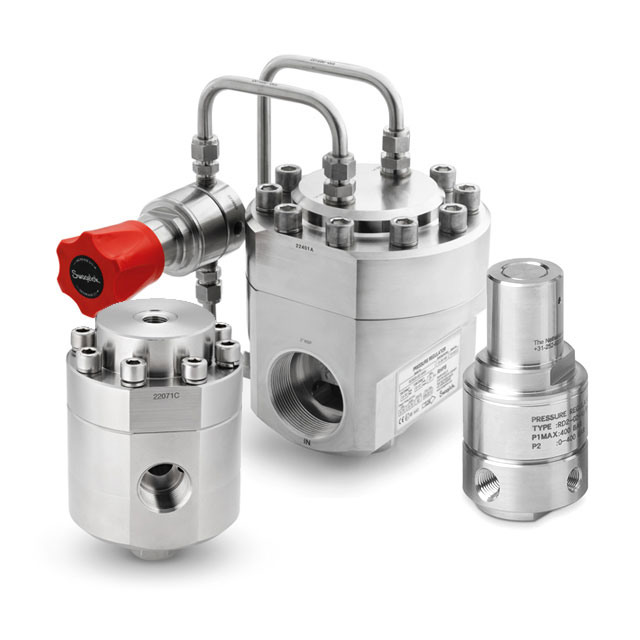

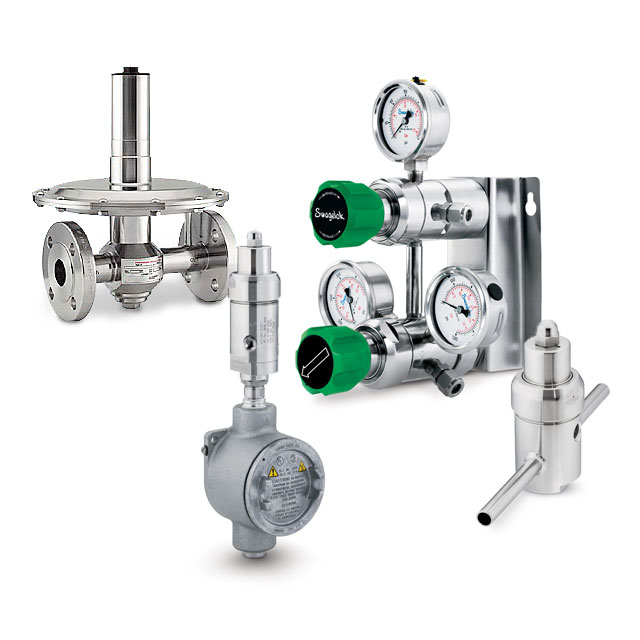
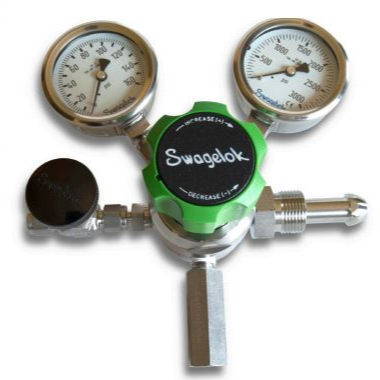
/FlowCurveGenerator%20(1)%20(1)%20(1).jpg)
/Video%20-%20KEV%20Series.jpg)
